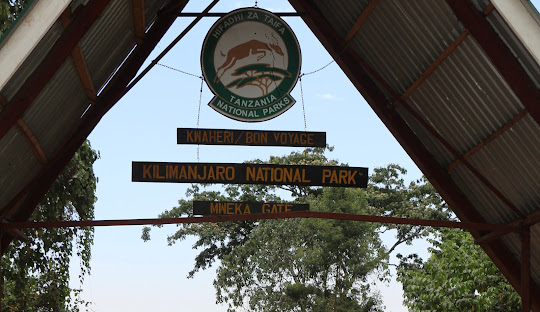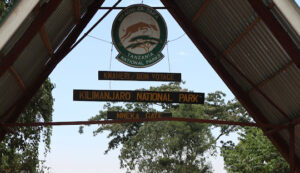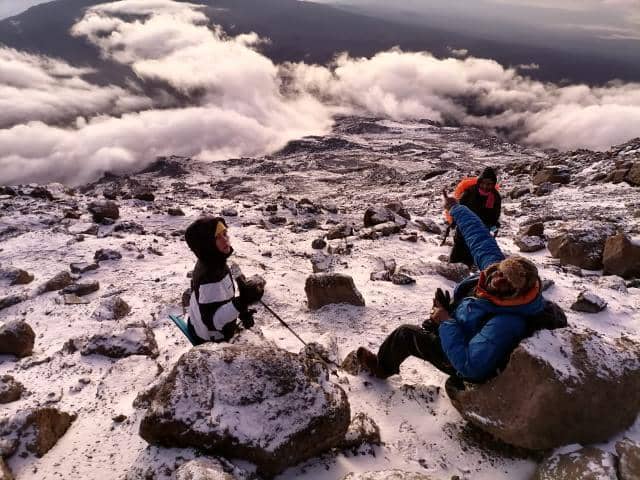- Overview
- Trip Outline
- Trip Includes
- Trip Excludes
- Gallery
- Reviews
- FAQ
The Lemosho Route is one of the most scenic and less crowded paths to the summit of Mount Kilimanjaro. Known for its varied landscapes and high success rates due to excellent acclimatization, this route offers a rewarding trekking experience. This guide provides a comprehensive overview of the 8 days 7 nights Mount Kilimanjaro trek Via Lemosho Route, ensuring that you are well-prepared for an unforgettable expeditions with Kilitusk African Adventure, a premier tour operator in Tanzania.
No details found.
Itineraries
Day 0
Arrival in Tanzania
Arriving in Arusha or Moshi
Your journey begins with your arrival at Kilimanjaro International Airport, where you’ll be met by representatives from Kilitusk. Transfer to your hotel in Arusha or Moshi, vibrant towns located at the base of Mount Kilimanjaro. Use this day to rest and acclimate to the altitude.
Pre-Trek Briefing and Gear Check
In the evening, attend a pre-trek briefing with your guide. This session includes an overview of the trek, safety protocols, and a thorough gear check. Ensure you have all necessary equipment, from thermal clothing to trekking poles
Day 1
Lemosho Glades to Big Tree Camp
Starting the Trek
After an early breakfast, drive to Londorossi Gate (2,100 meters) for registration and permits. Then proceed to Lemosho Glades (2,200 meters) to begin your trek. The trail starts through dense rainforest, offering a gentle introduction to the trek.
Scenic Highlights and Rainforest Trekking
As you trek through the lush rainforest, keep an eye out for wildlife such as colobus monkeys and various bird species. The trail leads to Big Tree Camp (2,800 meters), where you’ll spend your first night on the mountain. Enjoy a hot meal and rest in your tented camp.
Day 2
Big Tree Camp to Shira 1 Camp
Transitioning from Rainforest to Moorland
Continue your ascent, leaving the rainforest behind and entering the moorland zone. The landscape changes dramatically, offering stunning views of the mountain and its surroundings. The trail becomes steeper but remains manageable.
Acclimatization Tips
Reaching Shira 1 Camp (3,500 meters) after a 5-6 hour trek, you’ll appreciate the importance of pacing yourself and staying hydrated. Acclimatization is key to a successful summit attempt, so listen to your body and take it slow.
Day 3
Shira 1 Camp to Shira 2 Camp
Exploring the Shira Plateau
Today’s trek takes you across the Shira Plateau, a high-altitude desert with panoramic views of Kilimanjaro. The trail is relatively flat, allowing for an easier day of trekking. Reach Shira 2 Camp (3,840 meters) by early afternoon.
Importance of Slow Ascent
Take the afternoon to explore the area and continue your acclimatization process. A slow and steady ascent is crucial for adapting to the altitude
Day 4
Shira 2 Camp to Barranco Camp via Lava Tower
Climbing the Lava Tower
Today’s trek includes a climb to the Lava Tower (4,630 meters), a significant acclimatization point. The landscape is rugged and rocky, providing a challenging but rewarding experience. The trek then descends to Barranco Camp (3,960 meters), helping your body adjust to the altitude.
Descending to Barranco Valley
The descent to Barranco Valley is scenic, with impressive views of the Western Breach and the Barranco Wall. This day is crucial for acclimatization, as it includes both ascent and descent.
Day 5
Barranco Camp to Karanga Camp
Conquering the Barranco Wall
Start the day by tackling the Barranco Wall, a steep but manageable climb that offers stunning views from the top. The trail then winds through the Karanga Valley, a beautiful and varied landscape.
Trekking Through Karanga Valley
Reach Karanga Camp (4,035 meters) by early afternoon, giving you time to rest and acclimate. The shorter trek and additional acclimatization time contribute to a higher success rate on the Lemosho Route.
Day 6
Karanga Camp to Barafu Camp
Preparing for the Summit
Today’s trek takes you to Barafu Camp (4,640 meters), the base camp for your summit attempt. The trail traverses an alpine desert, with sparse vegetation and stunning views. Arrive at Barafu Camp by early afternoon to rest and prepare for the challenging night ahead.
Trekking Through Alpine Desert
The final push to Barafu Camp is tough due to the altitude, but the sense of anticipation grows as you prepare for the summit attempt. Your guide will brief you on the summit night, emphasizing the importance of layering, hydration, and maintaining a steady pace.
Day 7
Summit Attempt and Descent to Mweka Camp
Reaching Uhuru Peak
Start your summit attempt around midnight, trekking through the darkness with headlamps. The trail to Stella Point (5,739 meters) is steep and rocky. Upon reaching Stella Point, continue along the crater rim to Uhuru Peak (5,895 meters), the highest point in Africa. Witness the breathtaking sunrise over the plains, a moment you’ll cherish forever.
Celebrating Your Achievement
After celebrating your achievement and taking photos, begin the descent back to Barafu Camp for a short rest. Continue your descent to Mweka Camp (3,100 meters), where you’ll spend the night. The descent is physically demanding, but the exhilaration of reaching the summit will carry you through.
Day 8
Descent to Mweka Gate and Departure
Final Descent and Reflection
Complete your descent to Mweka Gate, passing through lush rainforest once more. Reflect on your journey and the incredible landscapes you’ve experienced. At the gate, collect your summit certificate and say goodbye to your guides and porters.
No details found.
No details found.
Yes, it’s one of the more scenic and less crowded routes, but proper preparation and acclimatization are still essential.
The success rate is around 90%, higher with the extended duration for acclimatization.
Yes, Tanzanian regulations require all climbers to be accompanied by a licensed guide.
Summit night is the most challenging part due to the steep ascent, cold temperatures, and high altitude.







There are no reviews yet.